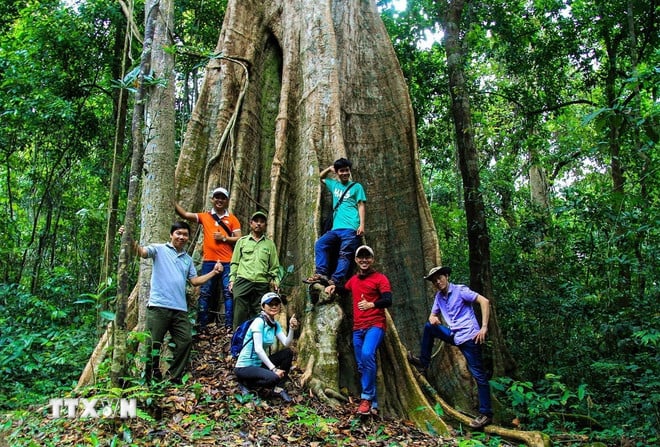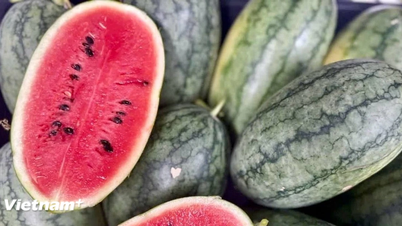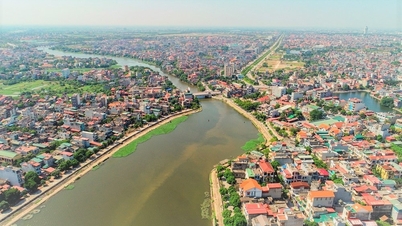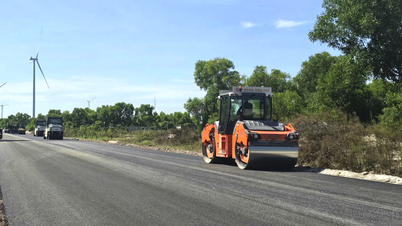At the 18th ASEAN Ministerial Meeting on Environment (AMME-18) held in Langkawi, Malaysia, Vietnam had 3 more National Parks recognized as "ASEAN Heritage Parks."
Vietnam's three new "ASEAN Heritage Parks" include Pu Mat National Park (Nghe An); Cultural and Nature Reserve ( Dong Nai ) and Xuan Thuy National Park (Ninh Binh).
With a total of 12 heritage parks, Vietnam is among the countries with the most ASEAN Heritage Parks in the region.
Pu Mat National Park
Located in the three districts of Anh Son, Con Cuong and Tuong Duong (old), Pu Mat National Park has an area of nearly 95,000 hectares, is the core area of the Western Nghe An Biosphere Reserve recognized by UNESCO in 2007.
The name Pu Mat comes from Thai, meaning "high mountain peak", with the highest peak at 1,841m.

Red-faced monkey in Pu Mat National Park. (Source: Vietnam Pictorial).
Pu Mat National Park possesses the most diverse flora and fauna ecosystem in the Central region with 2,494 plant species and 1,746 animal species. Among them, there are many species of flora and fauna listed in the Vietnam Red Book. Notably, this is also the first place to discover Saola individuals in Vietnam.
The highlight of Pu Mat National Park is Khe Kem waterfall, 150m high, 20km from Con Cuong commune, which is likened to a "white silk strip" in the middle of the forest. From the foot of the waterfall, visitors can watch the white foaming water, blending with the sound of forest birds and the cool atmosphere.
Another worthwhile trip is a boat ride along the Giang River, where limestone mountains tower, orchids bloom and monkeys run amok in the treetops. Suoi Moc is also an unforgettable experience, with clear water that is cool in the summer and warm in the winter.
Not only nature, Pu Mat is also attractive because of the unique culture of the Thai, H'Mong, and Dan Lai people, creating a picture that is both majestic and imbued with indigenous character.
Dong Nai Cultural and Natural Reserve
Dong Nai Nature-Cultural Reserve has an area of about 68,000 hectares of natural forest and 32,000 hectares of Tri An lake.

Tourists explore the primeval forest at Dong Nai Nature and Culture Reserve. (Photo: Hong Dat/ VNA)
This is the core area of the World Biosphere Reserve recognized by UNESCO, the "green lung" of the Southeast region, notable for its diverse ecosystem, home to many rare species of flora and fauna.
According to statistics, Dong Nai Nature-Cultural Reserve has a total of 1,552 species of higher plants, 166 families, 95 orders, 10 classes, belonging to 6 branches, of which 43 species are listed in the IUCN Red List (2015), 36 species in the Vietnam Red Book (2007), 11 endangered and rare species. In addition, the reserve also has 103 species of rare and precious medicinal plants that need to be protected for their genetic resources and developed.
Not only diverse in plant species, Dong Nai Nature and Culture Reserve is also rich in wildlife, with 1,817 species. There are 85 mammal species, 27 families and 10 orders, of which 36 are rare and endemic to Vietnam and Southeast Asia, including gaur, banten, elephant, sun bear, fire wolf... and especially the last wild elephant herd in Vietnam.
This place is also a "red address" with 3 national historical revolutionary relics: Suoi Linh tunnel, Southern Central Office and Southeast Regional Party Committee. Dong Nai Nature and Culture Reserve is an attractive tourist destination, giving visitors many opportunities to explore and have interesting and meaningful experiences.
Xuan Thuy National Park
About 160km from Hanoi, Xuan Thuy National Park (Ninh Binh province) is over 7,100 hectares wide, the first Ramsar site (international convention regulating the conservation and rational and appropriate use of wetlands of international importance) in Vietnam and Southeast Asia, recognized since 1988.

Spoonbills are listed as Endangered in the International Red Book, with only 40 individuals appearing each year in Xuan Thuy National Park. (Photo: Lam Khanh/TTVN)
This is a precious wetland at the mouth of the Red River, serving as an important stopover for tens of thousands of international migratory birds.
Xuan Thuy possesses a diverse ecosystem including tidal flats, mangrove forests and sand dunes, which is home to many rare waterfowl species such as spoonbills, grey-legged pelicans, and spoonbill sandpipers. In addition to birds, the park also has a rich source of seafood, creating a livelihood for coastal communities.
Besides nature, this land also preserves the unique cultural imprints of the residents of the Red River Delta with craft villages, traditional festivals and coastal villages rich in identity.
In 2004, UNESCO recognized Xuan Thuy as the core zone of the Red River Delta Biosphere Reserve.
Today, this is an attractive destination for nature lovers who want to explore the wetland ecosystem and admire the giant flocks of migratory birds flying back every winter./.
(Vietnam+)
Source: https://www.vietnamplus.vn/ba-cong-vien-di-san-asean-moi-cua-viet-nam-co-gi-hap-dan-du-khach-post1069275.vnp



![[Photo] Unique Phu Gia horse hat weaving craft](https://vphoto.vietnam.vn/thumb/1200x675/vietnam/resource/IMAGE/2025/10/10/1760084018320_ndo_br_01-jpg.webp)
![[Photo] Opening of the World Cultural Festival in Hanoi](https://vphoto.vietnam.vn/thumb/1200x675/vietnam/resource/IMAGE/2025/10/10/1760113426728_ndo_br_lehoi-khaimac-jpg.webp)

![[Photo] Ho Chi Minh City is brilliant with flags and flowers on the eve of the 1st Party Congress, term 2025-2030](https://vphoto.vietnam.vn/thumb/1200x675/vietnam/resource/IMAGE/2025/10/10/1760102923219_ndo_br_thiet-ke-chua-co-ten-43-png.webp)
































































































Comment (0)